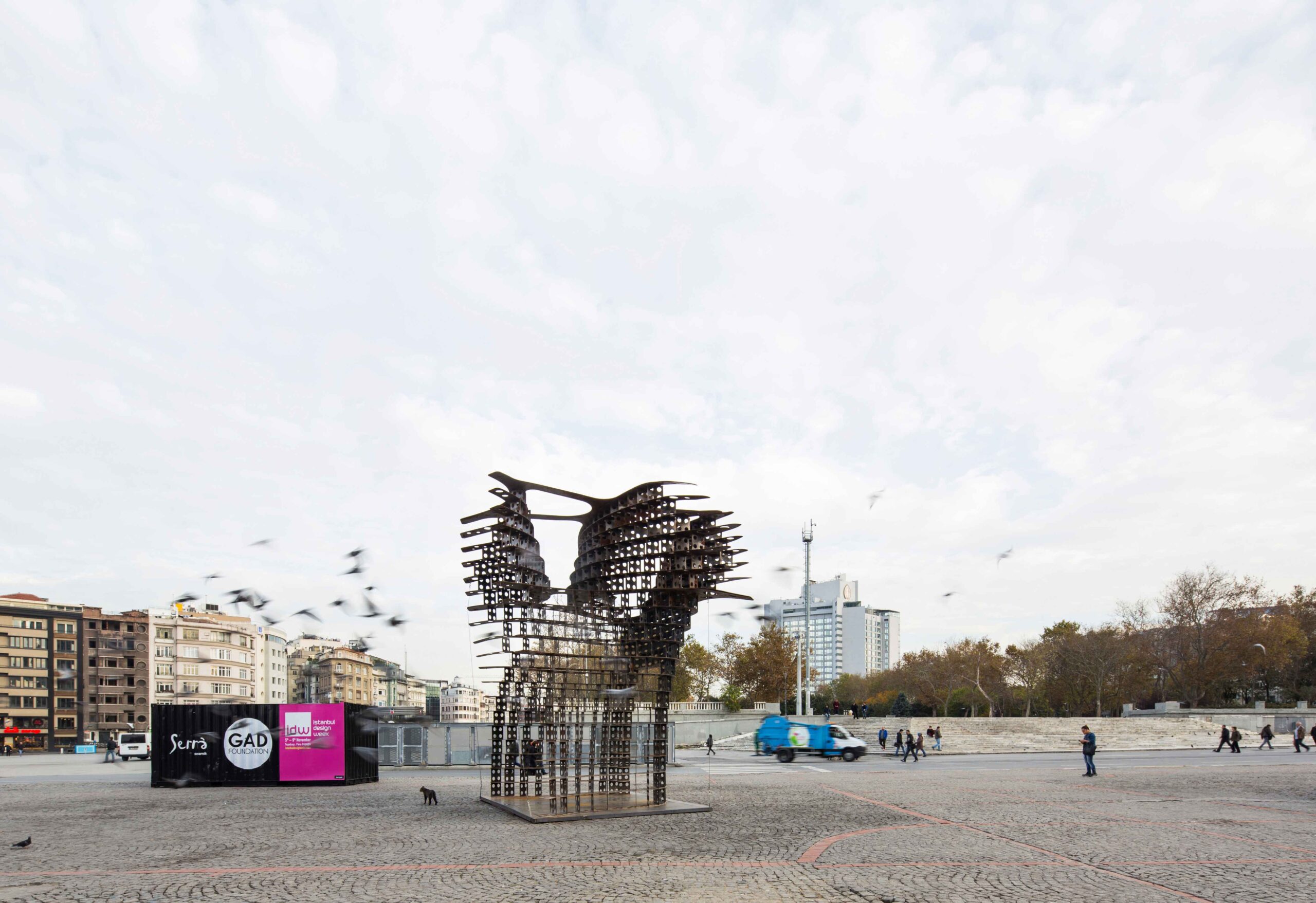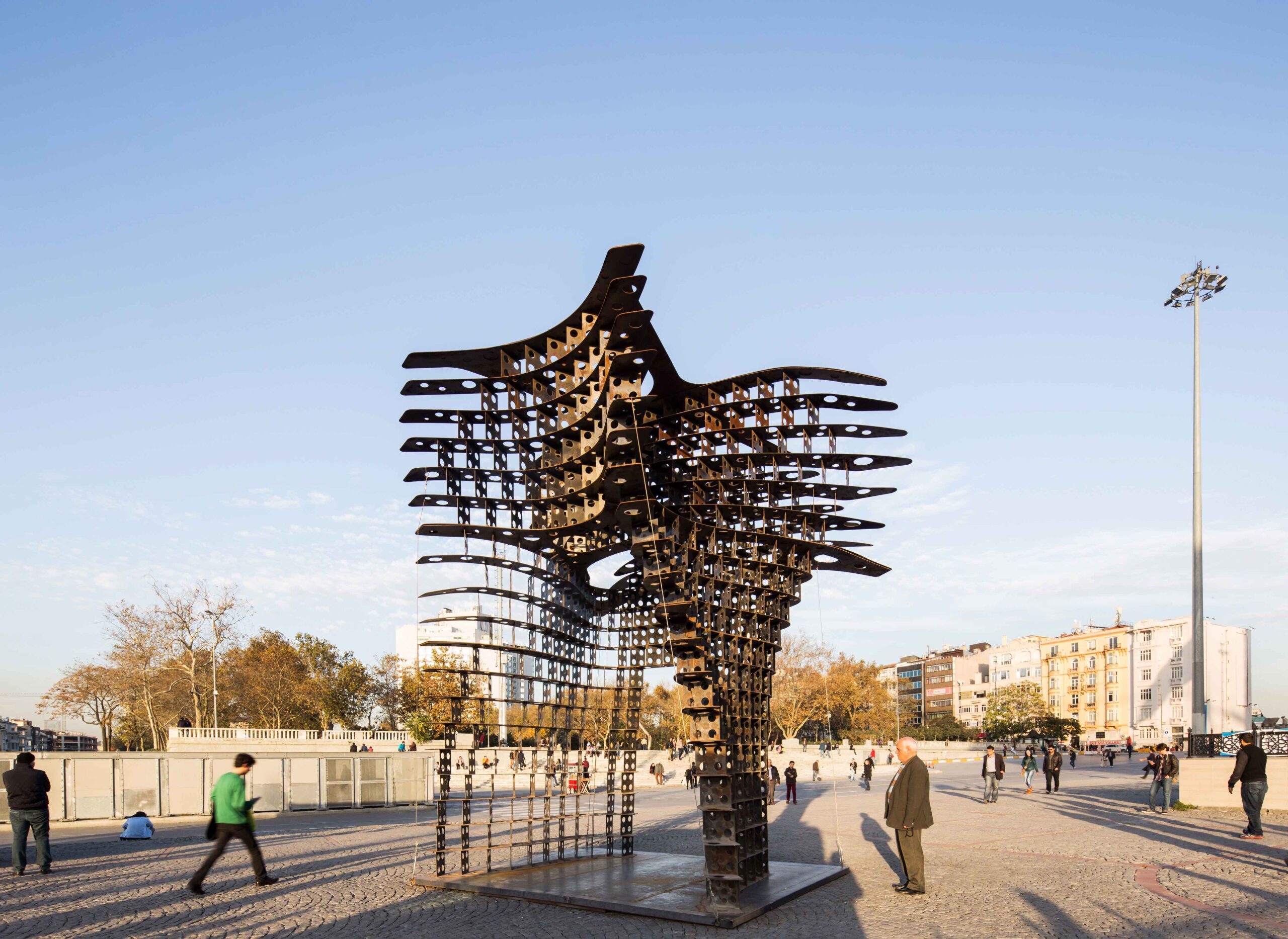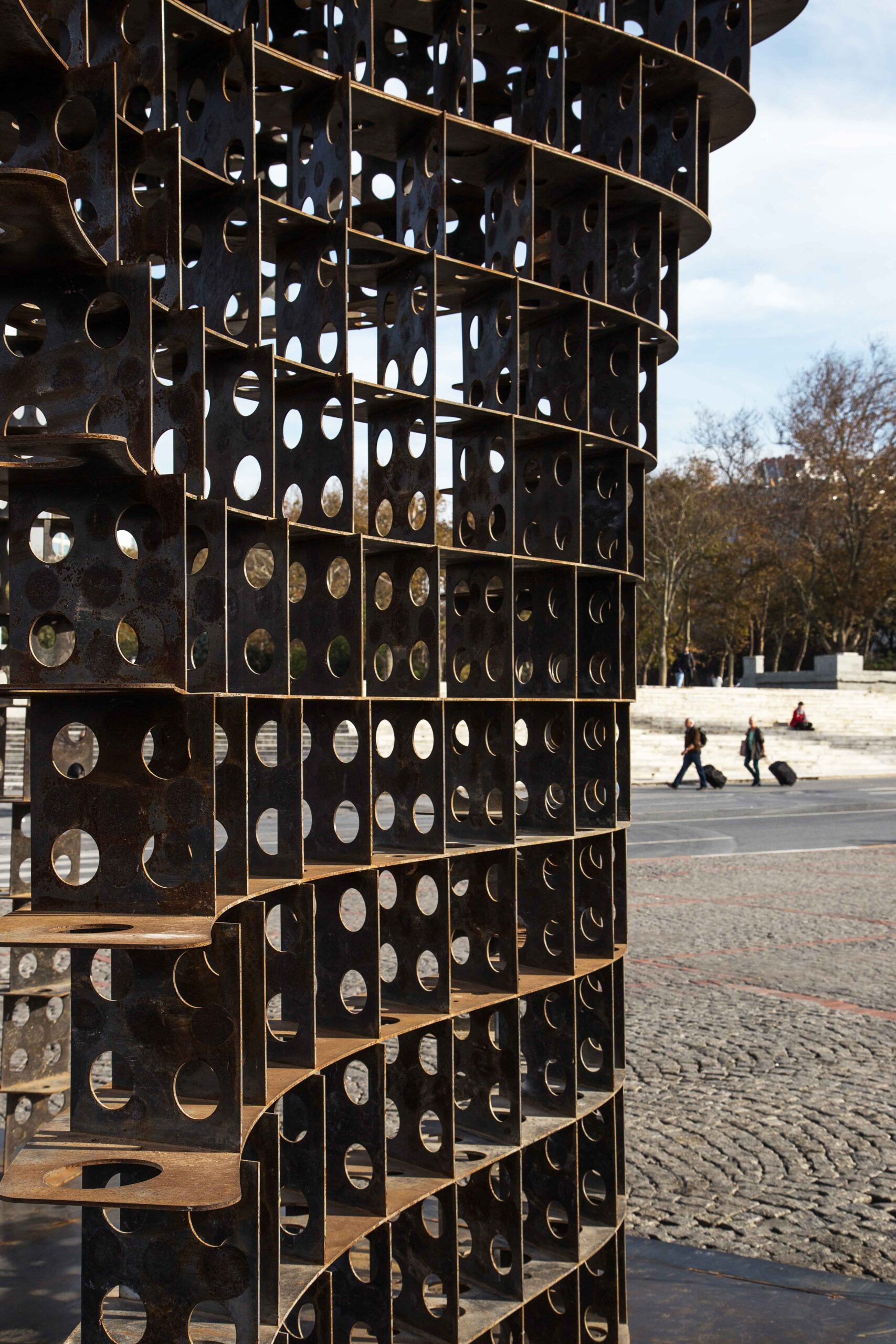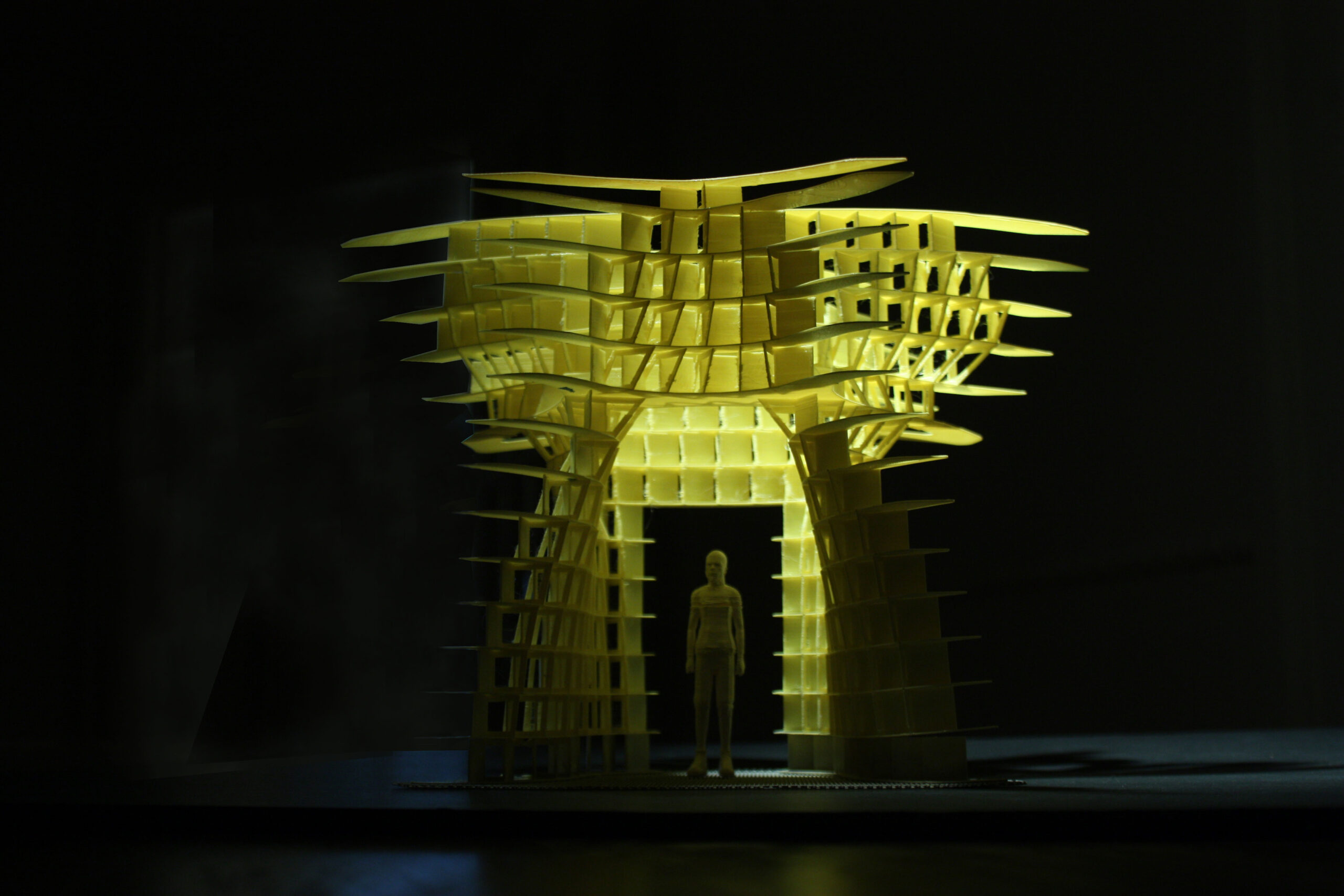

The design of Serra Gate is based on the desire to create homogeneous space generated by a complex structure in steel plates. The initial computational design model was based on geometry from the 3d arrangement of ceramic tiles but this strategy was quickly transformed into a more complex design derived from geometry based on the mathematics of minimal surfaces.
The transformation’s primary goal was to achieve flexibility through a series of formal pairing rules that resulted in a surface that delineates and explores space and location. This structure of vertical tiles between horizontal plates was realized through a digital design that included surface tension and structural analysis. The resulting complex steel geometry is realized without any column-like elements rising out into space to generate different views across the vast volume of Taksim Square from reflections of the intriguing minimal surface.
GAD’s exploration of tectonics through an architecture that is mutational and transformable in this design was one of the first pioneering efforts in digital design and fabrication to appear in Istanbul. The Serra Gate was later moved to another site on the Golden Horn as part of its journey through Istanbul’s urban context as an active agent of proactive design.
The Serra Gate outdoor installation was designed and fabricated by GAD as a part of on-going research on flexible structures. The design was based on a modular system in steel for a free-standing urban gate that can be moved and transformed based on programmatic requirements. For Serra Gate, the only functional constraint was that it would be an urban placemaker, a landmark attracting attention to a specific point in the city. After its initial opening at a temporary event at the Esma Sultan Mansion also designed by GAD in Ortaköy, Istanbul, the Serra Gate placemaker would move to a more visible public location in Taksim Square in the center of Istanbul as a part of Istanbul Design Week in 2015.

